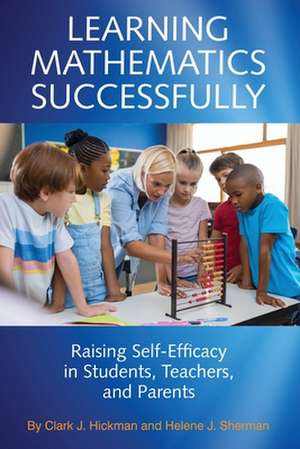Learning Mathematics Successfully
Autor Clark J. Hickman, Helene J. Shermanen Limba Engleză Paperback – 18 sep 2019
| Toate formatele și edițiile | Preț | Express |
|---|---|---|
| Paperback (1) | 386.88 lei 6-8 săpt. | |
| Information Age Publishing – 18 sep 2019 | 386.88 lei 6-8 săpt. | |
| Hardback (1) | 583.84 lei 6-8 săpt. | |
| Information Age Publishing – 19 sep 2019 | 583.84 lei 6-8 săpt. |
Preț: 386.88 lei
Nou
Puncte Express: 580
Preț estimativ în valută:
74.04€ • 77.10$ • 62.57£
74.04€ • 77.10$ • 62.57£
Carte tipărită la comandă
Livrare economică 10-24 martie
Preluare comenzi: 021 569.72.76
Specificații
ISBN-13: 9781641137379
ISBN-10: 1641137371
Pagini: 198
Dimensiuni: 156 x 234 x 11 mm
Greutate: 0.29 kg
Editura: Information Age Publishing
ISBN-10: 1641137371
Pagini: 198
Dimensiuni: 156 x 234 x 11 mm
Greutate: 0.29 kg
Editura: Information Age Publishing
Descriere
Examines how self-efficacy theory relates to the acquisition of mathematical competence. The text also provides specific and practical how-to strategies for both teachers and parents in applying these principles to classroom mathematics instruction and activities.
